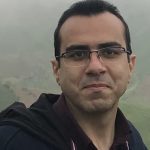Abstract
In order to determine the level of cell damage in cancerous cells, current cytogenetic tests have limitations such as time consumption and high cost. The aim of this study was to demonstrate the ability of nonlinear refractive (NLR) index as a predictor of breast cell damage caused by magneto-plasmonic nanoparticle based thermo-radiotherapy treatments. MCF-7 breast cancer cells were subjected individually to the treatment of radiation, radio-frequency (RF) hyperthermia, and radiation + RF hyperthermia. These treatments were repeated in the presence of magneto-plasmonic nanoparticle (Au@IONP). The MTT and nonlinear optical assays were used to evaluate the damage induced by different treatment modalities. The results of MTT were correlated with Z-scan, as the magnitude of nonlinear refraction increased with higher intensity of induced cell damages. In this regard, the lowest cell viability (38 %,) and highest magnitude of NLR index (+28.12) were obtained from combination of radiation (at 4 Gy dose) and hyperthermia treatment in the presence of nanoparticles. The proposed optical index (NLR) indicated high capability and can be used as an auxiliary tool to monitor induced cell damage during different treatment strategies. This technique is fast, noninvasive, does not impose cost, and finally does not waste materials.


